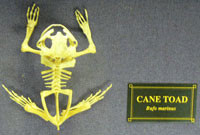LSIDs

This is a summary and explanation of LSIDs, by TDWG that explains some more about their meaning, purpose and implementation.
Summed up under 3 headings:
1. Think global, then everything's local
2. Have calling card, will travel
3. Carry meaning, not just data
LSIDs and their implementation will add to the concept of the semantic web, where the connections and interconnections of knowledge start to be searchable, and compileable. The basis of this process is the making of online data machine readable, so that software can be taught to seek out and compile knowledge from all sorts of digital objects (see the machine is us/ing us). A specific example in relation to LSIDs from the Kevin Thiele's summary is that of the image of a funnel web spider. Currently Google images searches for images on the web, and searches the surrounding html text for some inferred meaning or label - sometimes it is right, sometimes it is wrong. If the image was tagged with an LSID, it becomes possible to go directly to the metadata, via a query, which will return tagged, machine readable information, for example 'this image is of an organism', and 'the name of the organism is Atrax robustus'. If the species name changes, a tag could point the query towards the originating LSID, and so always be able to seek out the correct name. In this case, LSIDs are pointing to LSIDs, adding to the power and functionality of the system.
The parts of the LSID include the unique specimen identifier, and the issuing authority, which when combined make it globally unique. Even when combined with other data from other databases, the LSID makes the particular digital object always tracable back to its source.
The challenge now is to explain this in an interesting relevant format suitable for a short video piece.


No comments:
Post a Comment